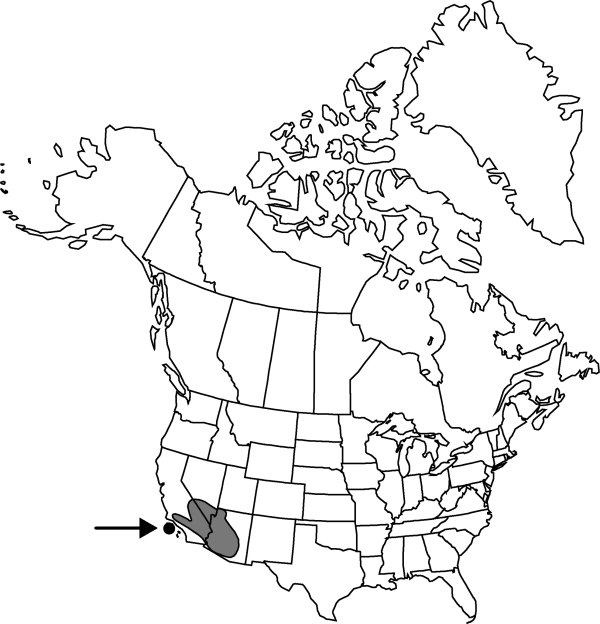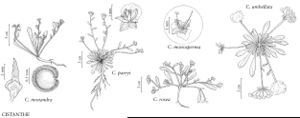Cistanthe monandra
Phytologia 68: 267. 1990.
Illustrated
Basionym: Calyptridium monandrum Nuttall in J. Torrey and A. Gray, Fl. N. Amer. 1: 198. 1838
Plants annual, taprooted. Stems 2 or more from each rosette, spreading to decumbent, 1.5–18 cm. Leaves basal and cauline; basal withering in fruit, in single, prostrate rosette, blade spatulate, 1–5 cm; cauline leaf blades spatulate, 1–2(–4) cm. Inflor-escences racemose or paniculate cymes, scorpioid when immature, loose. Flowers subsessile; sepals ovate, unequal, 1–2 mm, herbaceous, margins scarious; petals (2–)3, pink to reddish, 1–3 mm; stamens 1(–3), anther yellow; style absent; stigmas 2. Capsules ovoid to cylindric, somewhat falcate, 4–8 mm; valves 2. Seeds 4–10, black, orbicular, 0.3–0.7 mm, shiny. 2n = 44.
Phenology: Flowering Mar–Jun.
Habitat: Open sandy areas, burns
Elevation: 0-2100 m
Distribution

Ariz., Calif., Nev., Mexico (Baja California).
Discussion
Selected References
None.
Lower Taxa
None.
